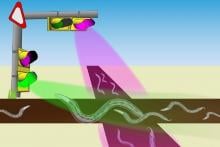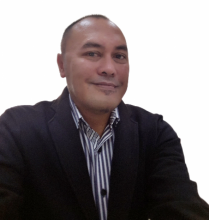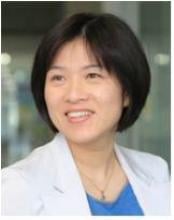Biology Biotechnology
News
19 Mar 2024
The 12th Starch Value Chain ASIA conference was held in Vientiane, at Crowne Plaza Hotel, from February 27 to 29, 2024. The conference encompassed four key themes: Asia’s starch markets, industrial and food-grade tapioca starch in Laos with expansion plans, sustainable climate-smart agri-technology for rice and cassava cultivation, and challenges for future growth in Asia's biogas-to-energy sector.
05 Mar 2024
A novel method for studying genes in testicular cells of living animals could lead to breakthroughs in male contraception and fertility treatments.
11 Jan 2024
Researchers at the Institute of Industrial Science, The University of Tokyo create customizable polymer molds to produce cost-effective arrays of microneedles that can be used to uniquely identify pets with alphanumeric symbols instead of tags or collars.
08 Dec 2023
Researchers at Kanazawa University report in Frontiers in Molecular Biosciences a computational method to predict the placement of proteins on AFM substrates based on electrostatic interactions.
01 May 2023
A joint research group at Osaka Metropolitan University has succeeded in regulating the flow of single molecules in solution by opening and closing the nanovalve mounted on the nanofluidic device by applying external pressure. The research group fabricated a device with a ribbon-like, thin, soft glass sheet on the top, and at the bottom a hard glass substrate having nanochannels and nanovalve seats. By applying external pressure to the soft glass sheet to open and close the valve, they succeeded in directly manipulating and controlling the flow of individual molecules in solution. They also observed an effect of fluorescence signal amplification when single fluorescent molecules are confined in the tiny nanospace inside the valve. The effect can be ascribed to the nanoconfinement, which suppresses the random motion of the molecules.
28 Apr 2023
Researchers discuss whether a "brain organoid" should be treated as a person by law, and suggest the need for legal and social discussions uncoupled from debates on consciousness.
13 Apr 2023
A research group at Osaka Metropolitan University has succeeded in selectively recovering trace rare earth elements in synthetic seawater and environmental water, such as hot spring water, using baker’s yeast with a phosphate group added. The phosphorylated yeast is expected to be utilized as a material for recovering useful metals and removing toxic metals, thereby contributing to the realization of a metal resource-circulating society.
04 Mar 2023
Scientists have shown that swarming molecular robots can deliver cargo five times more efficiently than a robot working on its own.
02 Mar 2023
Bioengineers formulated a mathematical model that clarified the importance of bat ear motions in direction detection, making way for lean, mean sonar navigation machines.
11 Jan 2023
A team of Japanese researchers created a high-quality genome assembly of red perilla, a step toward harnessing the plant’s potentially useful bioactive chemicals — and its medicinal properties.
10 Jan 2023
An Osaka Metropolitan University research team analyzed the regulatory mechanisms of carbohydrate-hydrolyzing enzyme production in Aspergillus aculeatus, a filamentous fungus that produces enzymes with an excellent ability to degrade plant biomass. The team found that UDP-glucose 4-epimerase (Uge5), an enzyme known for its involvement in galactose metabolism, also regulates the expression of degrading enzyme genes in A. aculeatus. This is the very first report of Uge5’s roles in selective gene expression in response to different types of inducing sugars in filamentous fungi.
22 Dec 2022
Osaka Metropolitan University scientists discovered the principle of light-induced acceleration of antigen–antibody reaction, allowing for simple, ultrafast, and highly sensitive detection of proteins. The researchers introduced target proteins and probe particles with modified antibodies selectively binding to the target proteins into a small channel and applied irradiation with infrared laser light. They achieved, for the first time, the rapid measurement of trace amounts of attogram-level target proteins after only 3 minutes of laser irradiation. These findings will potentially contribute to breakthroughs in the development of systems for ultra-early diagnosis of various diseases.
15 Dec 2022
A research team led by the University of Hong Kong (HKU) and Lawrence Berkeley National Laboratory has invented an all-water robotic system that resolves the constraints of bio-inspired robots through revolutionary scientific advances.
30 Nov 2022
Osaka Metropolitan University researchers introduced seven proteins, thought to let bacteria swim by switching the direction that their helical bodies spiral, into a strain of synthetic bacterium with minimal genetic information. As a result, they confirmed that the synthetic bacterium named syn3, which is normally spherical, formed a helix that could swim by spiraling. Further investigation revealed that only two of these newly added proteins were required to make syn3 capable of minimal swimming. This swimming synthetic bacterium can be said to be the smallest mobile lifeform genetically, as it contains the fewest number of genes.
25 Nov 2022
A research group at the Osaka Metropolitan University Graduate School of Science has revealed a new system that allows them to control the behavior of the nematode worm Caenorhabditis elegans, using two different animal opsins, a type of light-sensitive protein. The first opsin was expressed in the worms’ sensory cells responsible for triggering avoidance behavior, making the worms move. This opsin was found to be approximately 7,000 times more sensitive to white light than the commonly used optogenetic protein channelrhodopsin-2. Likewise, a UV-sensitive opsin was expressed in the worms’ motor neurons, causing the worms to stop when exposed to UV light and start moving again when exposed to green light. Both opsins tested can be switched on and off repeatedly without breaking down, making them robust tools for future research, including the field of drug discovery.

08 Nov 2022
In a study recently published in the journal Nature Biomedical Engineering, researchers from Kanazawa University use a method called “lasso-grafting” to design therapeutics with enhanced longevity and brain penetration.
27 Sep 2022
- A research team led by Professor Lee Sungwon from DGIST succeeded in developing the world’s first mesh (nanomesh) structured electronic skin device (organic field-effect transistor)
- An electronic skin device comprising only a mesh (nanomesh) structure that can measure and process bio-signals for a prolonged period indicates a big step toward integrated systems for electronic skin devices.
25 May 2022
Researchers at Kanazawa University in collaboration with teams from Toyama Prefectural University and BioSeeds Corporation report in ACS Applied Materials & Interfaces the identification of a molecule with enhanced antiproliferative activity in cancer cells. The underlying biomolecular mechanism is the inhibition of an enzyme that is overproduced in several types of cancer.
26 Apr 2022
Researchers set out to find new ways to artificially induce mRNA to respond in ways that could eventually lead to therapeutic outcomes, expanding on the success of the mRNA-based COVID-19 vaccines and opening up new possibilities across a host of possible genetic therapies.
25 Apr 2022
Examination of endangered species’ stem cells unveils ancient genetic links between mammals.
16 Feb 2022
This is a novel study that attempted to construct a pH-sensitive delivery system into T cells and their subsets using carboxy-terminal Phe- and CHex-modified dendrimers with different structures, i.e. PAMAM-CHex-Phe and PAMAM-Phe-CHex. The findings contribute to the development of nanoplatforms for direct delivery to T cells to control the functions of T cells, which play key roles in cancer immunotherapy. This is the first report on direct delivery into T cells using pH-sensitive DDS.
31 Jan 2022
Garden soil houses a variety of bacteria and their natural byproducts — including one that may help halt tumor growth. Lankacidins are molecules that can be isolated from Strepomyces rochei, a common bacterium in soil. In addition to antimicrobial properties, a type of lankacidins, called lankacidin C, can inhibit tumor activity in various cancer cell lines, including leukemia, melanoma, ovarian and breast cancers. Lankacidin C offers a potential foundation on which to design anticancer drugs, but its structure is complicated and difficult to manipulate, according to an international research group. The same group recently identified where antitumor activity is housed on the molecule and has now used that information to simplify lankacidin as a potential starting point to engineer treatments.

24 Jan 2022
Researchers from Hokkaido University have proposed a framework to assist in the demarcation between genetically modified organisms and genome-edited organisms, taking into account both scientific and socio-ethical considerations.
06 Jan 2022
Enzymatic hydrolysis of planteose: α-Galactosidase is a promising molecular target for root parasitic weed control
13 Oct 2021
Coral reefs, comprising some of the most diverse and delicate ecosystems under water, are under immense stress. From global warming to pollution to pathogens, many of the reef-building coral species are listed as threatened or endangered. But, according to researchers in Japan, the corals may have an unlikely ally: bacteria.
30 Sep 2021
Geb Impact aims to scale up microalgae production to provide novel super food ingredient by cost-effective mass cultivation of microalgae
14 Sep 2021
When it comes to cancer, clarity is key. The ability to visualize cancerous tumors and metastatic tissue three dimensionally (3D) can help clinicians diagnose the precise type and stage of cancer, while also informing the best treatment methods. To obtain an even clearer tissue for imaging, a research team based in Japan has tested the effectiveness of specialized hydrogels. Acting as a 3D molecular network, these hydrogels can rapidly remove fats from tissues, which are a factor in tissue opacification, without losing their structure. The material is used in several biomedical devices, including contact lenses.
02 Sep 2021
Researchers at Kanazawa University describe in Scientific Reports the identification of small compounds that can regulate the cellular production of extracellular vesicles — nanocontainers transporting biomolecules between cells. Such compounds hold promise for use in therapies for various diseases.
26 Aug 2021
A multi-functional, small molecule can tag mutant genetic sequences inside mitochondria for removal.
Events
Sorry, nothing coming up for this discipline
Researchers
Dr Fabien Grasset is a Research Director at the Centre national de la recherche scientifique (CNRS) and currently serving as Director of Research for Rennes Institute of Chemical Sciences (ISCR). His areas of expertise include materials chemistry, solid-state chemistry, nanotechnology, nanoparticles, optical coatings and thin films.
Dr. Zong-Hong Lin is a Professor at the Institute of Biomedical Engineering, National Tsing Hua University and at the Department of Biomedical Engineering, National Taiwan University.
Dr. Cheng-Siang Tan is an Associate Professor at the Faculty of Medicine and Health Sciences, Universiti Malaysia Sarawak (UNIMAS). He is an expert in infectious and emerging diseases and biosafety and biorisk management.
Dr. So Iwata is a Professor at the Graduate School of Medicine Kyoto University and the Group Director of the SACLA Science Research Group, RIKEN SPring-8 Center. He has investigated how specialized membrane channels remove antimicrobial drugs from inside bacterial cells.
Dr. Mitchell is a professor at the Department of Biological Sciences, Ulsan National Institute of Science and Technology (UNIST). His primary research interest is the study of bacterial strains that attack and prey on other bacteria, including antimicrobial-resistant pathogens.
Department of Microbiology / Biomolecular Sciences
Universiti Teknologi MARA
Malaysia
Dr. Wookbong Kwon is currently a postdoctoral researcher at the Division of Biotechnology of Daegu Gyeongbuk Institute of Science and Technology (DGIST)
Assistant Professor of Environmental Science
Krishna Institute of Allied Sciences
Krishna Institute of Medical Sciences
Deemed To Be University, Karad
Ana Carina Manjua's current PhD work is in the design and fabrication of a biological inspired artificial microfluid platform for drug screening.
Frederico Castelo Ferreira's current research interest balances between fundamental and applied research, with potential translation into the market of sustainable products and processes.
Dr. Tengku Haziyamin Tengku Abdul Hamid's recent discovery of a novel strain has enabled a new patent to be drafted and was awarded gold medal in Malaysian Technology Expo 2021 for his new probiotic prototype called ProAquaVcare.
Associate Professor Hajin Kim is a biomedical engineer at the Single Molecule Biophysics Laboratory, Ulsan National Institute of Science and Technology, South Korea.
Yoon-Kyoung Cho is currently a group leader in the Center for Soft and Living Matter at the Institute for Basic Science (IBS) and a full professor in the Department of Biomedical Engineering at Ulsan National Institute of Science and Technology (UNIST) in the Republic of Korea.
Dr NK Prasanna is currently working as Sr. Scientist & Editor, Indian Journal of Biochemistry & Biophysics, Research Journals Division at CSIR-National Institute of Science Communication and Policy Research, New Delhi. Before joining CSIR (NIScPR), she was at IIT Guwahati. Dr Prasanna completed her Ph.D from Institute of Medical Sciences, Banaras Hindu University, Varanasi.
In CSIR-NIScPR, She served one important flagship journals viz. Indian journal of Biochemistry and Biophysics (IJBB; ISSN: 0301-1208) It is pertinent to mention that the journal ranks first among all the NIScPR journals as per the available Journal Metrics by international agencies such as Thomson Reuters and Scopus. Details of remarkable academic achievements of IJBB which she spearheading, both nationally and globally. The Indian journal of Biochemistry and Biophysics (IJBB) is a premier SCI-indexed bimonthly peer-reviewed research journal that publishes original research articles in the subject area of biochemistry and biophysics
Aparna B. Gunjal is a microbiologist at Dr. D.Y. Patil, Arts, Commerce & Science College, India.
Michitaka Notaguchi is an assistant professor at the Bioscience and Biotechnology Center, Nagoya University, Japan.
Professor and Head of Microbiology and Immunology Department,
Faculty of Medicine, Lincoln University College (LUC) Malaysia.
Giants in history
Filipina chemist María Orosa (29 November 1892–13 February 1945) fought malnutrition and food insecurity in the Philippines by devising over 700 culinary creations including Soyalac, a nutrient rich drink made from soybeans, and Darak, rice cookies packed with Vitamin B1, which could prevent beriberi disease caused by Vitamin B1 deficiency. She was also a partisan of the guerrilla movement resisting Japanese occupation during World War II, and died after being struck by shrapnel while working in her laboratory during the Battle of Manila.
Chinese agronomist Yuan Longping (7 September 1930 – 22 May 2021) developed the first varieties of the high-yield, hybrid rice that brought food security to multiple countries including China, which had been ravaged by food shortages as recently as the mid-20th century.
A Japanese surgeon, Tetsuzo Akutsu (20 August 1922 – 9 August 2007) built the first artificial heart capable of keeping an animal alive.















































